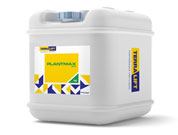
CHOOSING A SELECTIVE HERBICIDE
When spraying for weeds this Spring it is important to identify your target weeds to get the best out of your application. Here are two excellent selective herbicides which will tackle all major weed problems:-
Holster XL (MAPP No. 13596)
A premium turf herbicide that has been specifically developed for the control of problem weeds in amenity turf (Including fine turf). Weeds treated with Holster XL show symptoms such as twisted leaf expansion and altered growth - ultimately leading to the decay of the plant.
Holster XL provides outstanding control of a range of broad-leaved weeds including:-
- Slender Speedwell
- Cat's ear
- Dandelion
- Common Mouse-ear
- Yarrow
- Plantain spp.
- Creeping Buttercup
- Daisy
- Common Chickweed
- White Clover
- Mouse-ear Hawkweed
- Common Sorrel
- Yellow Suckling Clover
- Selfheal
Click here for further information
OUTRUN (MAPP No. 12838)
A selective turf herbicide containing three active ingredients. All three actives are taken up through the leaves and work by disrupting plant hormone activity in susceptible weed species. They are readily translocated throughout the plant.
Outrun controls the following weeds in managed amenity turf and / or grassland:-
- Autumn Hawkbit
- Procumbent Pearlwort
- Bulbous Buttercup *
- Cat's-ear
- Common Stork's-bill
- Sea Milkwort
- Common Chickweed
- Creeping Buttercup
- Thrift
- White Clover
- Daisy
- Dandelion
- Docks *
- Field Madder
- Mayweeds
- Meadow Buttercup
- Black Medick
- Plantains
- Ragwort
- Self Heal
- Silverweed
- Cleavers
- Sorrel
- Thistles
- Trefoils
- Common Mouse-ear
- Yellow Rattle
- Heath Bedstraw
- Mouse-ear Hawkweed
(* See lable for further information)
Click here for further information
(Other selective weedkillers are available on our website)
Latest News
Ground Care Show 2012 We would like to invite customers old and new to our Ground Care Show 2012. Where we will be displaying the latest ground care machinery and products. |  |
John Philp has hole at Carnoustie named after him! After 30 years in charge at Carnoustie Links Trust John Philp confirmed to our representative John Robertson that he is to get a hole named after him. |  |
The Ultimate Pitch Package Everris and Syngenta brings the dream of Primo Maxx treated pitches within reach, to add great value in terms of pitch management and quality, AT THE 2011 PRICE! |  |
AMINO ACIDS
WHAT ARE AMINO ACIDS?
• Amino Acids are required by the plant throughout all of
their growing stages and are the building blocks of all
proteins.
• All protein in plants and animals are made exclusively from
L-amino acids.
• D-form amino acids are not used by plants to make
proteins. They may become a source of nutrients for plants
only after microbial break down and therefore are not used widely
for turf nutrition.
• L-amino acids are the same in plants as they are in
animals. Plants make them from inorganic minerals when growing
under optimum conditions.
WHY ARE AMINO ACIDS IMPORTANT FOR PLANTS?
• Amino acids are the starting points for the production of
cellular molecules including vitamins, chlorophyll, enzymes,
proteins, etc.
• They have an important nutritional function during
germination.
• They are vital during the production of proteins and in the
formation of phytohormones such as auxins.
• They are also important in the regulation of the water
balance especially when plants are under stressful conditions such
as drought or summer stress.
• Amino acids also act as chelating molecules of essential
nutrients for normal development of the plant.
WHY IS IT IMPORTANT TO SUPPLEMENT AMINO ACIDS TO PLANTS?
• Under optimum growing conditions, plants synthesize their
own L-amino acids through thousands of chemical reactions and a
significant use of energy.
• However, when growing under stressful conditions, (eg.
Heat, drought, frost, wear, salinity and disease) plants decrease
or stop the synthesis of carbohydrates and consequently the
production of L-amino acids.
• Instead plants have to hydrolyze or break down structural
proteins to obtain the required L-amino acids.
• Plants cannot make their own amino acids during periods of
stress and rely on root zone storage of amino acids to stay
alive.
• These activities require an extraordinary use of energy by
plants and contribute to the reduction of root mass and the quality
of plants.
• Feeding plants L-amino acids saves the plant energy
allowing it to photosynthesize more normally even under stressful
conditions.
HOW THEY WORK?
• L-amino acids are readily absorbed after application (through
the leaves or roots) and translocated throughout the plant.
• L-amino acids increase plants ability to absorb nutrients
through their roots and/or leaves, especially during periods of
stress (environmental, mechanical, disease, salinity or poor soil
conditions).
• Foliar applications of L-amino acids help plants out
of stress
WHEN TO USE?
• Apply early, pre-conditioning plants with L-amino acids
is the best way to enhance the tolerance of plants to stress and
produce healthier and stronger plants throughout the year.
• Regular application of L-amino acids reduces the amount of
nitrogen needed by plants to produce their proteins, enzymes,
chlorophyll, or other nitrogenous compounds.
• Spoon feeding plants with L-amino acids is like humans
taking supplemental vitamins on a regular basis.
• Under drought conditions L-amino acids increase water use
efficiency and water retention in plants thus increasing the
tolerance of plants to drought stress.
Please find below a selection of products which include Amino Acids
Featured Products
You are on this mail list because you subscribed on our website. You may unsubscribe here

